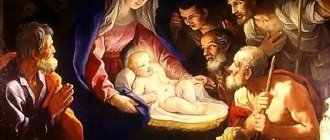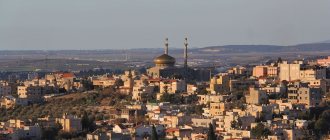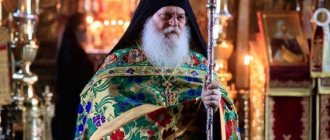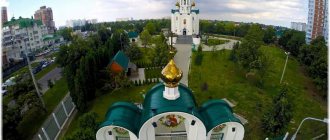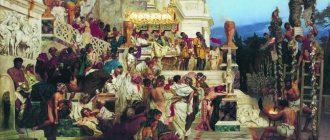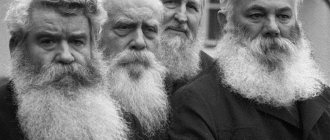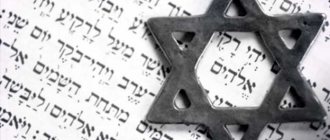| Source: | |
| Christmas tree in Yafo, 2021. Photo by Alexander Rafailov. Arab Christians - one of the ethnic-religious communities that make up the population of Israel. Christian Arabs (approximately 123,000 people) live mainly in cities, including Nazareth, Shfaram and Haifa. Although they nominally belong to a variety of denominations, the majority belong to the Greek Catholic, Greek Orthodox and Roman Catholic churches. |
Basic information
Christians are a group far removed from the rest of the Arabic-speaking population of Israel, maintaining their endogamy and avoiding marriage with Muslim Arabs.
The identity of Christians in Israel is multi-layered:
- belonging to Christians,
- belonging to a specific Christian denomination,
- belonging to the Arabs,
- belonging to the State of Israel.
Christians make up 2.1% of Israel's population and 9.1% of its non-Jewish population. Christians in Israel belong to 35 different denominations associated with four main churches: Orthodox, Catholic, Monophysite and Protestant.
Among Orthodox churches
Israel has the largest Greek Orthodox Church; it is headed by the patriarch, who occupies a leading position among the country's Christian clergy.
Main article
:
Jerusalem Orthodox Church
In Israel there are the Russian spiritual mission of the Moscow Patriarchate, founded in 1874, headed by an archimandrite (the scale of its activities is incommensurable with those that existed before 1917), the mission of the American Orthodox Church (split from the Russian Church in 1970) and mission of the Romanian Orthodox Church.
Catholic Church
in Israel has about 25,000 parishioners, and together with six Uniate churches (Eastern churches that retain their structure and rituals, but recognize the primacy of the pope: Greek Catholic - about 46 thousand parishioners, Maronite - about six thousand, Armenian Catholic, Syro- Catholic, Chaldean and Coptic - several hundred parishioners each) unites about 2/3 of all Christians in the country. The Roman Catholic Church itself owns an extensive network of religious, cultural and charitable institutions. The Greek Catholic Church operates mainly in the north of the country (Haifa, Nazareth, Acre, Shfaram and the villages of the Galilee).
Monophysite Church
is represented in Israel by the Armenian Apostolic (Gregorian) - about 1,500 parishioners, of which approximately half live in the Armenian quarter in the Old City of Jerusalem, the Coptic - about a thousand parishioners, the Syrian (Jacovist) - about a thousand parishioners, and the Ethiopian - about 100 parishioners.
Protestantism
has about 20 different directions in Israel (about 3,000 adherents in total). The largest Protestant churches in Israel are the Arab Lutheran (about 1,000 parishioners) and the Arab Evangelical Episcopalian, which spun off from the Anglican Church (2,000 parishioners).
The internal autonomy of Christian communities, recognized by the Turkish and confirmed by the British Mandate authorities and then by Israel, extends to the administration of communally owned holy sites, the appointment of clergy, school education and judicial proceedings. By virtue of the so-called “surrender” agreements concluded by the Turkish authorities with the European powers and recognized by subsequent governments, church property is exempt from most state and municipal taxes, duties and other fees.
Sundays and Christian holidays are officially recognized as non-working days for Christians in Israel. Christian communities maintain their own primary and secondary schools. At the request of the Greek Catholic Church and the Baptist Church, the Ministry of Education and Culture officially recognized their schools and took over the payment of salaries for teaching staff.
In the 1960s–1990s. a significant number of churches, monasteries and religious schools were built and restored. Many holy places have been restored or renovated, and significant construction work to provide access to holy places has been carried out at state or municipal expense (in the Old City of Jerusalem, at Lake Kinneret and in other places).
By tradition, representatives of the highest church hierarchy participate in Israeli public and civil ceremonies (opening of Knesset sessions, celebrations of Israel's Independence Day, etc.), and representatives of the Israeli government are invited to religious ceremonies of Christian communities (consecration of churches, elevation of senior hierarchs etc.), as well as for Christmas and Easter services.
On New Year's Eve (according to the Gregorian calendar), the President of Israel gives a reception in honor of the heads of the country's Christian churches. Christian Arabs in Israel are exempt from military service.
Origin of the Christian Arabs
Most Christians in Israel are descendants of ethnic groups that lived in Eretz Israel before the Arab Muslim conquest and have retained their distinct identity. Among them there are groups that can be considered as special, although currently Arabized, ethnic groups.
- Palestinian Greeks. The number of Greek Orthodox Christians in Israel is about 30-40 thousand (the total number of parishioners of the Jerusalem Greek Orthodox Patriarchate in Israel, Judea and Samaria and Jordan is, according to official data, 130 thousand people).
Most of them are concentrated in Galilee, not forming a majority anywhere. In addition, Palestinian Greeks live in Jaffa, Lod, Ramla, Jerusalem, as well as Beit Lehem, Ramallah and some other settlements in Judea and Samaria.
Theoretically, the Greek Catholic community, which is numerically larger than the Greek Orthodox community, which is also concentrated primarily in the Galilee (the main population of the village of Fassuta), can be considered as part of the Greek minority in Israel. However, unlike the Greek Orthodox, the Arabization of the Greek Catholic community has gone very far.
- Assyrians. The Assyrian national movement, known as Assyrianism, arose at the end of the 19th century. It declares the existence of a special Assyrian nation, uniting Middle Eastern Christians speaking various dialects of Aramaic - followers of the Assyrian Church of the East, the Chaldean Catholic Church, the Jacobite Church and the Syro-Catholic Church.
The total number of followers of these Christian denominations in Israel is small and amounts to only a few thousand people. There are somewhat more of them in Judea and Samaria (primarily in Beit Lehem). Despite living for centuries in a predominantly Arabic-speaking environment, they retain Aramaic (Syriac) as the only language of worship. Some of them (the older generation) also retain spoken Aramaic. Aramaic-speaking Christians generally do not consider themselves Arabs. And they proudly declare that they have preserved the “language of Christ.”
The ideas of Assyrianism also enjoy some popularity among the Maronites, who lost spoken Aramaic back in the Middle Ages, but retained it as a language of worship. Several thousand Maronites live in Israel. These include the majority of the inhabitants of the Galilean village of Gush Halav and the majority of refugees from Lebanon (former fighters of the South Lebanese Army and members of their families) dispersedly settled in the north of the country.[1]
- The Latin (Roman Catholic) community arose as a result of the massive resettlement of European (primarily French) colonists to Palestine during the Kingdom of Jerusalem founded by the crusaders.
It included representatives of other European nations, as well as Eastern Christians who converted to Roman Catholicism. The resulting group was called the Franks (Franj in Arabic) and used Old French as their spoken language.
After the second Muslim conquest, the remaining Franks in the country gradually switched to French. Some of them converted to Islam, but retained the memory of their European origin. The Latin community is the descendants of the "Franjs" who have retained the Catholic religion. Members of the Latin community usually speak Arabic in everyday life, but culturally they are oriented towards France.
In “old” Israel and Judea and Samaria, several tens of thousands of representatives of the Latin community live. They make up the majority of the population in the Galilean village of Meilia.
- Within the Roman Catholic community in Israel, there is a special group called “Hebrew-speaking Catholics” (Katolim Dovrei Hebrew). They represent a group of several hundred people, which formed organizationally in the 1950s. and has autonomy within the Jerusalem Latin Patriarchate. Hebrew Catholics conduct worship in Hebrew and declare themselves to be Israelis “living in Hebrew.”
The group arose from the arrival in Israel of the 1950s wave of repatriation of Catholics of Jewish and mixed descent from Central and Western Europe. Over time, they were joined by foreigners naturalized in Israel and their children, for whom Hebrew became their native language.
Migrants from the Catholic communities of Galilee who moved to cities with a predominantly Jewish population do not create new communities, but join the communities of Hebrew-speaking Catholics where they exist. For example, in Beer Sheva, it is people from the Arabic-speaking Catholic communities who are the main flock of the Hebrew-speaking Catholic community.
Hebrew-speaking Catholics openly declare themselves as Israeli patriots, calling on Catholics living in the country to serve in the army and be an organic part of Israeli Jewish society, while maintaining their religious affiliation.
History of the Arab people
Arabs are a Semitic people who inhabit the Arab countries of Western Asia and North Africa. They also live in Iran, Turkey, Afghanistan, Ethiopia, Somalia, Zanzibar, East Africa. A significant number of Arab emigrants live in North and South America, West Africa, and also in France. The term “Arabs” first began to be used to refer to the nomads of northern Arabia in the 9th century. BC.
Arabs speak Arabic and use the Arabic script. Arabic belongs to the Semitic-Hamitic language group and contains many regional dialects. In all Muslim countries, the population uses a common literary language (al-lugat al-fuskha). The majority of the population of Eastern countries are Sunni Muslims.
Scientists discovered the first information about the Arabs in Assyrian and Babylonian chronicles, but the Bible tells more specifically about them. It is biblical historical traditions that inform us about the appearance in the 14th century BC. in Transjordan (and later in Palestine) of Aramaic pastoral tribes from the southern Arabian land. Initially, these tribes were designated as Ibri (“beyond the river” or “those who crossed the river”). According to scientists, the Arabian tribes first went to Mesopotamia, and later turned south. The word "ibri" is associated with the name of Abraham, the biblical patriarch from whom Jews and Arabs descend.
Arabs consider Arabia to be their homeland - Jazirat al-Arab (“Island of the Arabs”). The center of the Arab world is the eastern regions of Syria and Jordan. Another historical and ethnographic zone consists of the rest of Syria, Jordan, as well as Lebanon and Palestine. Iraq is a separate historical and ethnographic zone. One zone includes Egypt, Northern Sudan and Libya, as well as the Maghreb-Mauritanian zone, which includes the Maghreb countries: Tunisia, Algeria, Morocco, Mauritania and Western Sahara.
The modern Arab people arose after their conquests of the ancient peoples of Western Asia and North Africa: the Arameans, Phoenicians, Egyptians, Libyans (Berbers) and other peoples. Scientists suggest that the ancient Arab people were formed from Semitic tribes, the indigenous population of the Arabian Peninsula. From 3000 BC The Semites of Arabia settled in Mesopotamia and Syria. They spoke the Akkadian language, named after the capital of the state that arose in 2300 BC. Later, the Akkadians captured all the Arabian tribes that settled in Mesopotamia during this period. From the 13th century BC. Aramaic tribes of Arabian origin began to settle in Western Asia, and in the 7th-6th centuries. BC. Aramaic was replaced by Akkadian.
Almost all the ancient peoples of Syria and Mesopotamia were captured by the Arameans.
During this period, several of the first Arab states arose on the territory of Yemen:
- according to scientists, in the XII or VI-V centuries. BC. the Minaan, Sabaean and Himyarite kingdoms arose in southern Arabia;
- from the 6th century BC On the northern border of Arabia, the Nabataean, and later the Palmyra and Lichian kingdoms arose.
All the states that emerged were united thanks to the Himyarite kingdom.
Features of the society of the Ancient East:
- The origins of the slave system.
- Construction and repair of large irrigation systems, agriculture at state expense.
- The population was represented by artisans who made high-quality products: agricultural implements, weapons, household utensils, leather goods, fabrics, and jewelry from sea shells.
- Extraction of gold, fragrant resins: frankincense and myrrh.
- Carrying out transit trade. It stimulated the exchange of goods between the Arabian Arabs and the Christian population of the Middle East.
From the end of the 1st millennium BC. and in the first centuries AD. Arab tribes actively populated Western Asia. As a result of settlement by the V-VI centuries. AD The Arab people made up the bulk of the population of Palestine, Jordan, Southern Syria and other regions of Mesopotamia. The Arab tribes Amila, Juzam, Lahm, Ghassan, as well as the Kuda groups, spread across the lands of Arabia. In the 5th century The Arab states of Ghassan (in southern Syria) and Lahm (on the Middle Euphrates) were founded. The state of Ghassan was dependent on Byzantium, and Lakhm was dependent on Sasanian Iran. In the IV-VI centuries. AD A single Arab nation began to form on the territory of Arabia. The formation process was completed by the 630s.
The growth in the number of new cities was facilitated by the development of trade between nomadic tribes and agricultural settlements, as well as with neighboring countries: Syria, Mesopotamia, Ethiopia, Iran. Despite wars between tribes over pastures, territories and theft of herds, large political alliances of tribes were concluded, for example Kinda.
Relations between the Jewish Yishuv and the Arab-Christian community
The Christian Arabs, who had lived for centuries under Muslim rule in Palestine and who, as a whole, had come to terms with the subordinate position of the “dhimmis,” found themselves associated with the Muslim Arabs under the influence of three main factors:
- The influence of the ideology of Arab nationalism, which tried to equalize all “Arabs” regardless of their religious affiliation.
- The erroneous policy of the Israeli authorities towards Arabic-speaking Christians, as a result of which they were not separated from the Muslim Arabs, as happened with the Druze and Circassians.
- The inability or unwillingness of the Israeli state to demonstrate its power and actually protect Christians from attacks by neighbors in non-Jewish localities in Israel, in which Christians lived next to Muslims and Druze.
The position of Christians as a minority discriminated against by Muslims throughout the Middle East initially contributed to their tolerant (and in some cases even enthusiastic) attitude towards the Jewish national liberation movement.
The ideology of pan-Arab nationalism, which tried to nullify the significance of religious differences, allowed some Arabic-speaking Christians to integrate into the Arab nationalist movement and even occupy high positions in it. But in our time, Arab nationalism is losing ground to Islamism, which returns Christians to the status of a discriminated minority.
The State of Israel is the only state in the Middle East (with the exception of Lebanon) that guarantees real equality to Christians. Unlike the Christian communities in Iraq, Syria, Jordan, and the Palestinian Authority, the Christian community in Israel is not decreasing in number, but continues to increase.
Due to the factors mentioned above, as well as their high educational level, the Arab-speaking Christian elite acted as a kind of intermediary between the Jewish state and its Arab citizens. Their representation in Israeli government bodies was proportionally much higher than that of Muslim Arabs.
In many cases, Christian politicians acted in relation to Jewish parties as a kind of “contractor”, bringing them Arab, primarily Muslim votes. In a situation where official Israel, in fact, ignores the special identity of the Christian minority and considers it as an integral part of the Arab minority, this has led to the fact that Christian politicians are immeasurably more dependent on the votes of numerous Muslims than on the votes of their small co-religionists .
In pursuit of Muslim votes, many politicians of Christian origin have taken the path of anti-Israel radicalization (the most striking example of this is former Knesset member Azmi Bshara). There are complaints among Israeli Christians that they do not have their own representation because Christian members of the Knesset defend the interests of Muslims.
There is a movement of Christian Arabs to integrate into Israeli society. Many Christian Arabs serve in the army and even become officers.[1][2] Nazareth priest Gabriel Nadaf heads an organization that supports young Christians who volunteer to join the IDF.[3]
Attempts are being made to create a political party of Christian Arabs that will be loyal to Israel. As of early 2019, such a party is not yet represented in the Knesset.[2][4][5]
Religions of the Arab population
Muslims
Muslims are a people who profess the religion of Islam. Previously, Muslims were called Basurmans, in the Russian Empire - Mohammedans. Muslims follow the rules of the holy book - the Koran, as well as the teachings and practices of Muhammad, recorded in the Hasidic collections (Sunnah). Islam says that the Qur'an is the word of God, which was transmitted through the angel Gabriel (Gabriel) to the prophet Muhammad.
Muslims believe that God (Allah) is eternal and has no partners. They believe that Allah is incomparable, does not give birth and was not begotten (Al-Ikhlas). According to Muslim beliefs, the emergence of Islam was the final stage of the Abrahamic religions. It was transmitted through the prophets: Nuh (Noah), Ibrahim (Abraham), Musa (Moses), Isa (Jesus). According to Islam, all previous scriptures and revelations have been slightly modified (takrif). The Qur'an is the final revelation from the Almighty. Muslims recognize Muhammad as the last prophet. In their opinion, after Muhammad there can be no other prophets (“Seal of the Prophets”).
Today, the number of Muslims in the world is approximately 1.7 billion people. Among religions, Islam ranks second in the world after Christianity. Muslims are divided into two groups: Sunnis (90%) and Shiites (10%).
The largest number of Muslims live in Indonesia - 12.7%. Pakistan is in second place – 11.0%. Next are Bangladesh (9.2%) and Egypt (4.9%). The smallest numbers of Muslims live in countries such as India, China, Russia and Ethiopia.
A person is a Muslim if he pronounces the formula of Monotheism (shahadah): “I testify that there is no God but Allah, and I also testify that Muhammad is the Messenger of Allah.”
Religious duties of every devout Muslim (five pillars):
- Shahada;
- daily five prayers (namaz);
- fasting during Ramadan (eid);
- alms (zakat);
- pilgrimage to Mecca (Hajj) at least once in a lifetime.
In the religious practice of Muslims, there are also six pillars of iman (faith). If a Muslim does not accept at least one of them, his faith is considered invalid.
Pillars of Iman (faith):
- faith in Allah;
- Faith in Angels (malaika);
- faith in the scriptures;
- belief in prophets (nabis) and messengers (rasul);
- belief in the Day of Judgment (qiyamat);
- belief in predestination of fate (kidar), that everything good and bad happens according to the will of Allah.
Christians
Christians are people who are baptized and profess the religion of Christ. Christianity is an Abrahamic monotheistic religion based on the life and teachings of Jesus Christ as described in the New Testament. Christians believe that Jesus of Nazareth is the Messiah, the Son of God and the Savior of mankind.
Christianity is the largest world religion. The number of believers in the world is 2.3 billion. Every country has at least one Christian community.
The first use of the term "Christian" is found in the New Testament. The followers of Jesus Christ were first called Christians because they were like Jesus Christ in their behavior, actions and words.
The first use of the term "Christian" outside the Bible was by Tacitus, who noted that Nero blamed "the Christians" for the Great Fire of Rome in 64 AD.
Christianity arose in the 1st century in Palestine, which was at that time under the rule of the Roman Empire, first among the Arameans of Mesopotamia. Already in the first decade of its existence, Christianity spread to other provinces among other ethnic groups.
Christianity was first adopted as a state religion in Greater Armenia in 301. During the reign of Emperor Constantine I, who issued an edict on freedom of religion in 313, Christianity received the status of a state religion in the Roman Empire.
In 1054, the Christian Church split into Western (Catholic) and Eastern (Orthodox). As a result of the reformation movement in the Catholic Church in the 16th century, Protestantism arose.
Therefore, Christianity is divided into three groups:
- Orthodoxy;
- Catholicism;
- Protestantism
From the point of view of neo-Protestant communities, there are seven principles that define who a Christian is:
- This is a disciple or follower of Jesus Christ.
- This is a man who, by his faith, accepted Jesus Christ as his God and Savior, who died for his sins on the cross of Calvary.
- This is a person in whom the Holy Spirit of God lives.
- This is a person who studies the Word of God and applies it to his life.
- This is a person who personally communicates with the Creator.
- This is a person who dedicated his life to serving God (regardless of his type of activity).
- This is a person who serves with his gifts the Body of Christ - brothers and sisters in faith.
Gallery
- Orthodox Greek Church of the Archangel Gabriel and the Holy Spring in Nazareth
- Catholic Mass celebrated near the Grotto of the Annunciation in the Basilica of the Annunciation in Nazareth
- Catholic Basilica of the Annunciation in Nazareth
- Mary's Spring in Nazareth
- Painting by Vasily Polenov depicting the Source of Mary in the first century
- Archaeological site in the courtyard of the Basilica of the Annunciation in Nazareth - remains of buildings from the beginning of our century.
- Bas-relief from Crusader times in Nazareth
- In front of the Church of St. George the Victorious in Lod
- Greek Orthodox Church of the Annunciation
- Interior of the Church of St. Joseph in Nazareth
- Ceiling of the Stella Maris Church in Haifa.
- Carmelite monastery in Haifa.
- Paris Square in Haifa.
- Church of the Holy Sepulcher in Jerusalem.
- Church of the Latin Patriarchate in the Old City of Jerusalem.
Notes
- ↑ 1.01.1 Arie Tepper Christians of the Holy Land: “Don’t call us Arabs”
- ↑ 2.02.1 New Christian Arab Party supports Jewish democratic state NEWSru.co.il July 10, 2013
- A public organization of Arab Christians demanded that an investigation be launched against Raj Zaatria NEWSru.co.il December 17, 2018
- The Arab House Party announced its participation in the Knesset elections to join the coalition NEWSru.co.il December 28, 2021
- An application has been submitted to the registrar of parties to create the Center Arab Party “New Horizon” NEWSru.co.il December 26, 2018
Notes[ | ]
- https://www.cia.gov/library/publications/the-world-factbook/geos/sy.html (CIA: World Factbook)
- CIA - The World Factbook - Lebanon
- Republic of Iraq (undefined)
. Operation World. Archived from the original on August 24, 2011. - CIA - The World Factbook - Jordan
- The Canadian Arab Federation & Arab Community Center of Toronto.
A Profile of Arabs in Canada
(unspecified)
.
Virtual Library
. Toronto Center of Excellence (1999). - 2001 Census: Ancestry - Detailed paper (unspecified)
(PDF). Australian Bureau of Statistics. Archived from the original on August 24, 2011. - Appendices to Isma (undefined)
. Human Rights and Equal Opportunity Commission's Publications Unit. Archived from the original on August 24, 2011. - Israeli Ministry of Foreign Affairs
- Maronites
- Panchenko K. A., Christian Arabs // Orthodox Encyclopedia Vol. III. M., 2001, pp. 152-155.
Sources and links
- KEE, volume: 3. Col.: 388–410.
- NATIONAL MINORITIES - on the website of the Israeli Foreign Ministry
- Dr. Velvl Chernin Ethnic situation in Israel: history, problems and prospects (abridged version)
- Jonas I.
A Free People in Our Land, 2005 (Israeli Foreign Ministry website) - Guy Bekhor Cracked walls of the monastery: how Christians chose Israel
Notice
: The preliminary basis for this article was the article State of Israel. Population in EEE
| p·o·r Ethnic groups in Israel | |
| Jews | Ashkenazim • Sephardim • Mizrahi • Falasha • Bnei Menashe • Samaritans • Karaites |
| Muslims | Arabs • Bedouins • Circassians • Gypsies • Turks |
| Christians | Israeli Armenians • Arabs • Gypsies |
| Rest | Druze • Chinese • African |

